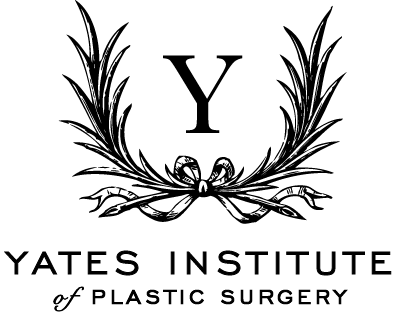How to Choose the Right Surgeon for Self-Paid Breast Reduction
How to find the surgeon for the self-paid breast reduction
If you’re considering breast reduction surgery, you probably have one big reason: you want relief. Whether it’s back and shoulder pain, deep bra strap grooves, or the daily struggle of finding clothes that fit properly, overly large breasts can make life uncomfortable. While some patients can get insurance coverage, many find themselves in a frustrating situation—either their provider denies the procedure or the approval process is so restrictive that it feels impossible. That’s when self-paid breast reduction becomes an option.
When you’re paying for surgery out of pocket, choosing the right plastic surgeon is even more important. You’re investing in your body, your health, and your long-term comfort. That means you need a surgeon who isn’t just skilled but also experienced in breast reduction and committed to achieving the best possible outcome for you. So, how do you make the right choice?
Understanding Self-Paid Breast Reduction Surgery
Before you start searching for a surgeon, it’s helpful to understand why breast reduction surgery is often self-paid and what that means for you.
Why Do Some Patients Pay for Breast Reduction Themselves?
Insurance companies tend to have strict criteria for covering breast reduction surgery. Even if you have significant discomfort, they may require:
Proof of ongoing medical issues related to your breast size (e.g., back pain, rashes).
Months of documented physical therapy, weight loss attempts, or other non-surgical treatments before approving surgery.
A minimum amount of breast tissue to be removed, often based on height, weight, and other factors.
For many patients, insurance won’t approve the procedure, or the process takes so long that paying out of pocket feels like the best solution.
The Benefits of Self-Paid Breast Reduction
While it’s frustrating that insurance doesn’t always cover breast reduction, paying for surgery yourself does have some advantages:
✅ You get to choose your surgeon instead of being limited to in-network providers.
✅ No long approval process—once you’re ready, you can move forward on your timeline.
✅ More flexibility in the technique used and the amount of tissue removed.
What to Expect from the Surgery and Recovery
If you haven’t yet spoken with a plastic surgeon about breast reduction, here’s a general idea of what to expect:
The procedure removes excess breast tissue, fat, and skin to create a smaller, more proportionate breast shape.
It’s performed under general anesthesia and usually takes around 2-4 hours.
Most patients go home the same day and need about 1-2 weeks off work or regular activities.
Swelling and soreness are normal for the first few weeks, but you’ll start feeling better as healing progresses.
Knowing what the surgery involves is just the first step—now it’s time to talk about how to find the right surgeon to perform it.
The Credentials and Experience You Should Look For
Breast reduction surgery isn’t just about making your breasts smaller—it’s about creating a shape that looks natural, feels comfortable, and suits your body. That takes skill, precision, and experience.
When you’re evaluating plastic surgeons, credentials matter. Here’s what to look for:
Board Certification
The first thing you should check when researching a surgeon is board certification. This ensures that your surgeon has completed specialized training in plastic surgery and meets strict professional standards. In the U.S., you should look for certification from the American Board of Plastic Surgery (ABPS). This means the surgeon has:
✔ Completed at least six years of surgical training.
✔ Passed rigorous exams to prove their knowledge and expertise.
✔ Maintains high ethical and safety standards.
Unfortunately, not all surgeons offering breast reduction have this level of training. Some general surgeons or cosmetic surgeons perform breast reduction procedures without the same level of expertise.
Experience in Breast Reduction Surgery
Just because a surgeon is board-certified doesn’t mean they specialize in breast reduction. You want someone who regularly performs this procedure and understands how to:
Preserve sensation in the nipples while reducing breast size.
Minimize scarring through advanced techniques.
Create a natural-looking shape that fits your body proportions.
Don’t be afraid to ask, “How many breast reduction surgeries do you perform each year?”. A good surgeon will be happy to discuss their experience.
Hospital Privileges & Surgical Facility Accreditation
Even if your surgery is performed in a private surgical center, your surgeon should have hospital privileges. This means they are approved to perform surgery at a hospital, which is another sign of credibility and experience.
If they operate in a private facility, check that it’s accredited by a national organization like:
✔ The American Association for Accreditation of Ambulatory Surgery Facilities (AAAASF)
✔ The Accreditation Association for Ambulatory Health Care (AAAHC)
Accreditation means the facility meets high standards for safety, cleanliness, and emergency preparedness.
Evaluating Before and After Photos
A great way to gauge a surgeon’s skill is by looking at their before-and-after photos. This gives you a clear idea of their technique, aesthetic approach, and consistency.
What to Look for in Before-and-After Galleries
When reviewing a surgeon’s work, focus on these details:
✅ Symmetry – Do the breasts look even and proportionate?
✅ Scarring – Is it positioned discreetly along the breast crease?
✅ Natural shape – Are the breasts shaped in a way that flatters the patient’s body?
It’s also important to look for results on patients with body types similar to yours. If you have a fuller figure, but all the before-and-after images show petite women, you may want to ask if they have additional photos available.
Red Flags to Watch Out For
🚩 Overly edited or filtered images – Authentic photos should look natural, not airbrushed.
🚩 Lack of variety in body types – A surgeon should have experience with a range of patients.
🚩 No photos at all – If a surgeon doesn’t share any before-and-after images, that’s a red flag.
Many surgeons have additional photos available in-office, so don’t hesitate to ask to see more during your consultation.
Reading Reviews and Patient Testimonials
A surgeon’s website can tell you a lot about their credentials, but nothing compares to hearing directly from patients who have gone through the process. Reviews and testimonials offer valuable insight into what it’s really like to be in their care. They can help you understand whether past patients felt supported, how satisfied they were with their results, and whether the staff and clinic provided good communication before and after surgery.
Reliable reviews can be found on platforms like Google and RealSelf. Google often has the most extensive feedback, while RealSelf is specifically focused on cosmetic procedures, sometimes including before-and-after photos from patients. While a surgeon’s own website may feature glowing testimonials, keep in mind that those are curated, so they don’t always tell the full story.
When reading reviews, pay attention to the details. If patients mention that they felt heard and supported, had a smooth recovery, and were happy with their final results, that’s a good sign. On the other hand, repeated complaints about poor communication, rushed consultations, or unexpected fees might indicate that a surgeon isn’t the best choice. One or two negative reviews aren’t necessarily a dealbreaker —no surgeon is perfect—but if you notice the same issues coming up again and again, it’s worth considering.
It’s also helpful to see how the surgeon or their office responds to feedback. A good practice acknowledges concerns, offers explanations when necessary, and maintains professionalism in their replies. If reviews seem overly polished or lack specific details, or if the practice ignores or dismisses criticism, those could be red flags.
Reviews won’t give you the whole picture, but they’re an important tool in narrowing down your options. Once you find a surgeon with consistently strong feedback, the next step is meeting them in person.
Consultation: The Deciding Factor
A consultation is more than just a formality—it’s your chance to see if the surgeon is truly the right fit for you. This is when you’ll get a feel for their approach, their level of expertise, and their ability to address your concerns. You should leave feeling well-informed and comfortable with the decision you’re making.
During the consultation, the surgeon will ask about your goals for breast reduction and any physical discomfort you’re experiencing. They’ll examine your breast size, shape, and skin elasticity to determine the best technique for you. They should walk you through the procedure in detail, explaining what to expect before, during, and after surgery.
This is also the time to ask questions. You might want to know how many breast reductions they perform each year, what technique they use to minimize scarring, or how they handle potential complications. A good surgeon will answer your questions clearly and honestly, without rushing you through the process. If they seem impatient, vague, or hesitant to discuss certain topics, that’s a sign they might not be the right choice.
Pay attention to how the consultation makes you feel. Do you feel heard and respected? Does the surgeon take the time to understand your concerns? Do they set realistic expectations? A great surgeon isn’t just skilled in the operating room—they also make their patients feel comfortable, informed, and supported throughout the journey.
The consultation is your opportunity to make sure you’re in the right hands. If anything feels off, don’t hesitate to seek a second opinion. Choosing a breast reduction surgeon is a major decision, and you deserve to feel completely confident in the person performing your surgery.
Understanding Costs and Financing Options
Since you’re paying for your breast reduction out of pocket, understanding the costs involved is essential. The price of surgery can vary depending on factors like the surgeon’s experience, the complexity of the procedure, and the location of the practice. While it’s tempting to focus on finding the best deal, this is not the time to cut corners—choosing a highly skilled, board-certified surgeon is worth the investment.
A self-paid breast reduction typically includes multiple costs: the surgeon’s fee, anesthesia, facility fees, and post-operative care. Some practices bundle these expenses into a single price, while others break them down separately. It’s important to clarify exactly what’s included so you don’t end up with unexpected costs later on.
If the full price of surgery is a concern, many practices offer financing options. Some surgeons also have in-house payment plans. If this is something you might need, be sure to ask about it during your consultation.
One of the biggest mistakes people make when choosing a surgeon is prioritizing cost over quality. While it’s understandable to want an affordable option, a price that seems too good to be true often is. Lower fees might mean the surgeon is less experienced, the facility isn’t fully accredited, or post-op care is lacking. When it comes to surgery, safety and results should always come first.
Being upfront about your budget with the surgeon’s office can also be helpful. They may be able to suggest financing plans, payment schedules, or alternative approaches that make the procedure more accessible. The goal is to find a surgeon you trust, with pricing that’s transparent and fair.
Trust Your Instincts and Make an Informed Decision
After researching surgeons, reading reviews, and going through consultations, you’ll likely have a strong sense of who feels like the right choice. While credentials, experience, and cost are all important, your comfort level matters just as much.
A great surgeon will make you feel heard, respected, and fully informed. They’ll be upfront about what the surgery can and can’t achieve, set realistic expectations, and ensure that you feel comfortable every step of the way. If something feels rushed, unclear, or impersonal, that’s a sign to keep looking.
It’s also okay to take your time with the decision. If you need to think things over or compare different options, that’s completely normal. A surgeon who pressures you into booking quickly isn’t acting in your best interest. Breast reduction is a life-changing procedure, and you deserve to feel 100% confident in your choice.
Final Words
If you’ve found a surgeon who meets all the right criteria—strong credentials, extensive experience with breast reductions, great patient reviews, and a supportive approach—then you can move forward knowing you’ve made the best decision for yourself.
Ultimately, choosing the right plastic surgeon for a self-paid breast reduction is about more than just finding someone qualified. It’s about finding someone who understands your goals, prioritizes your safety, and supports you through the process. When you make the right choice, you’re not just investing in a procedure—you’re investing in your comfort, health, and quality of life.
FAQs about How to Choose the Right Surgeon for Self-Paid Breast Reduction
How far in advance should I book my surgery once I choose a surgeon?
Once you’ve decided on a surgeon, it’s best to book your procedure at least a few months in advance. Many experienced plastic surgeons have busy schedules, and you may need to wait for an available surgery date. If you have a specific timeline in mind—such as recovering before a vacation or major event—it’s important to plan ahead. Additionally, some surgeons require a pre-operative period where you’ll need to complete medical clearances or lifestyle adjustments, such as quitting smoking or stopping certain medications.
What should I bring to my consultation to make the most of my appointment?
To get the most value from your consultation, consider bringing:
A list of questions and concerns about the procedure, recovery, and results.
Photos of breast sizes and shapes you like (and those you don’t) to help communicate your goals.
A list of your medications and medical history, as some conditions or prescriptions may affect surgery.
A notebook or phone to take notes, as consultations can be information-heavy, and you may want to compare different surgeons later.
Will my breast size continue to change over time after surgery?
Yes, while breast reduction provides a permanent reduction in breast size, weight fluctuations, pregnancy, and aging can still impact your results. If you gain or lose a significant amount of weight after surgery, your breasts may change in size or shape. Many patients also experience some natural sagging over time due to the effects of aging and gravity.
Can I combine breast reduction with another procedure?
Yes, many patients choose to combine breast reduction with breast lift surgery or other body contouring procedures, like liposuction. A breast lift is often performed as part of a reduction to improve breast shape and nipple position, especially if there’s noticeable sagging. Some patients also opt for liposuction in the underarm or bra-line area to create a more sculpted result. If you’re considering multiple procedures, discuss this with your surgeon to see if combining them is safe and beneficial for your goals.
How do I prepare for the recovery process before surgery?
To ensure a smooth recovery, it’s important to prepare ahead of time. Arrange for someone to drive you home after surgery and stay with you for at least the first 24-48 hours. Set up a comfortable recovery space with pillows, easy-to-reach essentials, and button-up clothing that won’t require lifting your arms. Stock up on groceries, medications, and post-op supplies like compression garments or ice packs. It’s also helpful to plan time off work and adjust daily responsibilities, as you’ll need to avoid heavy lifting and strenuous activity for a few weeks. Proper preparation can make the healing process much easier and more comfortable.
Further Reading about Self-Paid Breast Reduction at Yates Institute of Plastic Surgery
Read more about Top Reasons Women Choose Self-Paid Breast Reduction Surgery
Read more about Self-Pay vs. Insurance - Why Many Women Opt for Self-Pay Breast Reduction
Read more about What to Expect From a Breast Reduction Surgery
Read more about How to Lose Weight before a Breast Reduction
Read more about Breast Reductions are Covered by Insurance?




